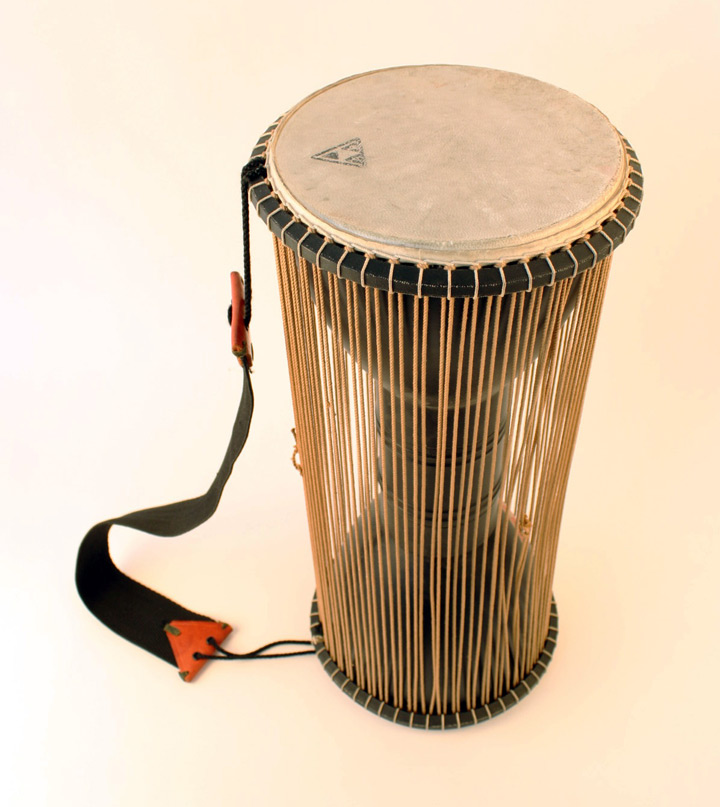Talking Drum
This is a modern replica of a traditional West African ‘talking drum’.
It is made by Acorn Percussion and has a hard plastic centre, loose brown string cords or lacings looped round the frame and cream hide for the drum heads, with a cloth strap handle. An original would have been made with a wooden body, heads of hide or fish skin, and leather lacings.
A ‘talking drum’ has an hourglass structure with two heads connected by loose fitting lacings. The drum is held under the left arm and played with a bent stick, while at the same time, the player squeezes the cords / lacings. This leads to variations in the pitch of the drum and this is why the drum is called a ‘talking drum’; the drum’s language.
These are some of the oldest instruments in West Africa and are associated with the ancient Ghana empire and therefore with Hausa and Yoruba cultures. The variation in tone that can be achieved is said to resemble human speech and the drums were used to communicate messages between villages. Early European colonialists and slave traders eventually realised that the drums could talk and were being used to warn villagers of their coming. As a result of the slave trade, the drums were also taken to the Americas where they were used for the same purpose and were for some time banned by plantation owners.
They are now used as popular instruments in West African music.

Height:44cm

Height:44cm

This is a modern replica of a traditional West African ‘talking drum’.
It is made by Acorn Percussion and has a hard plastic centre, loose brown string cords or lacings looped round the frame and cream hide for the drum heads, with a cloth strap handle. An original would have been made with a wooden body, heads of hide or fish skin, and leather lacings.
A ‘talking drum’ has an hourglass structure with two heads connected by loose fitting lacings. The drum is held under the left arm and played with a bent stick, while at the same time, the player squeezes the cords / lacings. This leads to variations in the pitch of the drum and this is why the drum is called a ‘talking drum’; the drum’s language.
These are some of the oldest instruments in West Africa and are associated with the ancient Ghana empire and therefore with Hausa and Yoruba cultures. The variation in tone that can be achieved is said to resemble human speech and the drums were used to communicate messages between villages. Early European colonialists and slave traders eventually realised that the drums could talk and were being used to warn villagers of their coming. As a result of the slave trade, the drums were also taken to the Americas where they were used for the same purpose and were for some time banned by plantation owners.
They are now used as popular instruments in West African music.




















